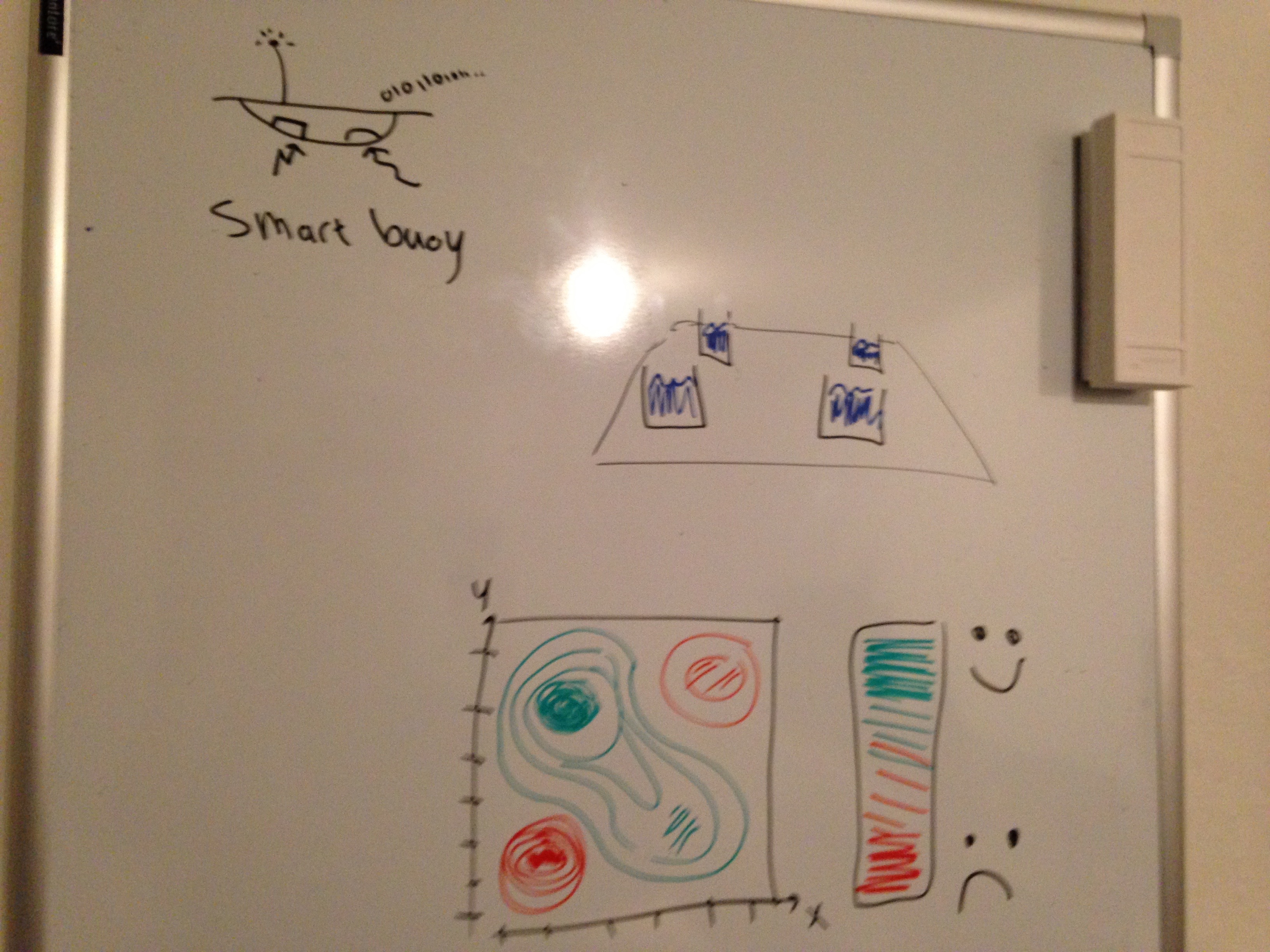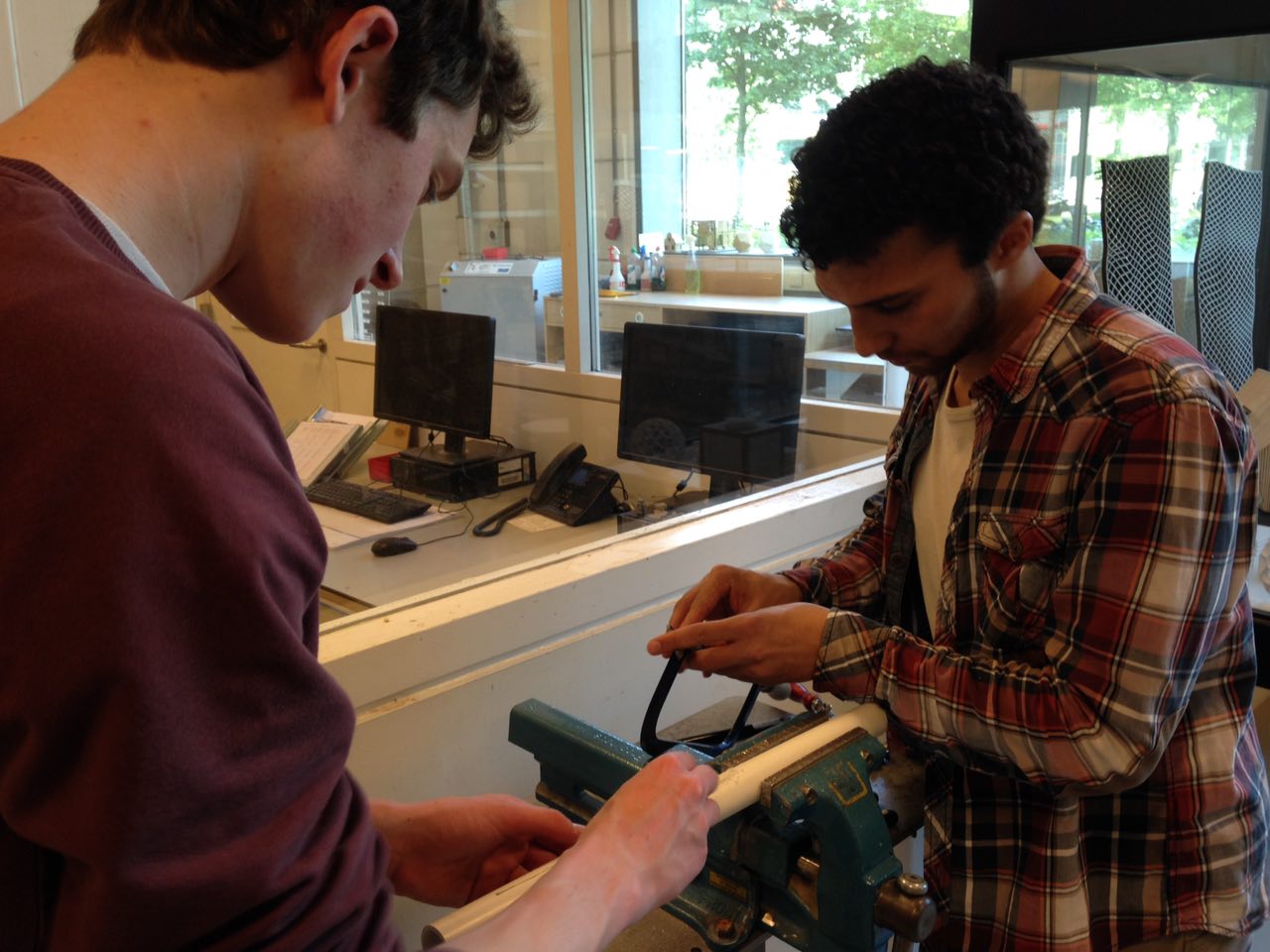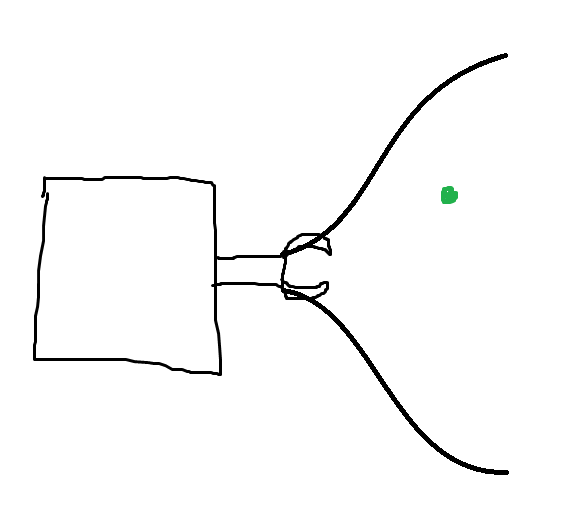Talk:PRE2015 4 Groep5
Log
Previous meetings
- 18-04-2016 Course introductory
- Formed groups
- Came up with a lot of concepts
- Decided final concept
- 21-04-2016 First meeting with group.
- Digged info about Seaweed.
- Prepared the presentation for week 2.
- Ate seaweed
- Individual Accomplishments
- Neph
- Wiki
- Powerpoint
- Nina
- Benefits
- Maritime Robitcs
- Stijn
- Environmental aspects
- Jochem
- USE aspects
- Arduin
- Roadmap
- Agenda
- Types of deliverables
- Possible applications
- Neph
- 25-04-2016 First presentation
- Received and handled feedback
- Made a rough global planning
- 28-04-2016 Second meeting meeting with group.
- Made a possible supply list
- Solve practical problems of the robot
- Worked on the total system
- Neph
- Robot prototype
- Nina
- Planning
- Stijn
- Could not make it
- Jochem
- Could not make it
- Arduin
- Logo
- Neph
- 02-05-2016 Second presentation
- 04-05-2016 Stijn made a design for the robot.
- 05-05-2016 Skype meeting Jochem en Nephtaly.
- Minutes:
- Rope design for lowering the robot may have negative consequences on the stability. Extendable PVC Tubes will be used instead. Also for bottom claw extender
- Worm reduction gear for hosit -> idlemovement needs 0 energy
- PVC ROV
- Welding the axis of the (fietskettingtandwielen) gear. For strenght
- PVC design for lowered part -> easy to handle, not a lot of water resistance -> cheap, light
- bicyle chain, gear and driving gear must be for the same type of chain.
- Screw gun battery for the power supply of the motor
- Waterpistol, or squirtgun for hydrocleaing
- koelkastbakje/voedselbewarding for middle. (waterproof and removable cover)
- Claws are expensive but unavoidable Perfect claws on discount
- Total price ~€400,-
- Needed to do:
- Test if Nema 17 is powerfull enough
- Test servo in water
- Need approval of budget
- Minutes:
- 09-05-2016 Division of tasks
- Design of the robot
- Parts list
- Renewable energy research
- 12-05-2016
- Parts list complete
- Products ordered
- 16-05-2016 (TU/e closed)
- Nephtaly tested antennas and servos at home
- 19-05-2016
- Implement renewable energy research
- Scaling and system design decisions
- Bought additional building materials
- Started building the robot
- Started working on the arduino software
Tasks
Personal Planning Preferences
- Arduin: mariculture, benefits of seaweed, maritime robotics (general, not applied to our farm), future farms, 'big data' of proposed design, USE: user, enterprise, branding and research grants
- Jochem: Business case(?), robot hardware/software eventueel een prototype website waarmee we de status van de robot kunnen bekijken, etc.
- Nephtaly: Design of the robot+station, part supply and programming
- Nina: finished design for the whole system, USE: society, enviromental factors, prototyping, solidworks
- Stijn: Mariculture, prototyping (voor de rest maakt het me niet echt uit)
Individual
Chairman (Arduin)Is the chairman at meeting and creates the agenda for the meetings(there are only plenary meetings, so they will not be chaired)
- Secretary (Jochem)
- Is responsible for the minutes of the meetings
- Sourceman (Stijn)
- Finds extra info or extra sources and supporting information for a statement
- Wiki&Drive maintenance (Nina & Nephtaly)
- Will maintain the organisation and cleanness of the wiki(talk)page as well as the organisation in the drive
Weekly
18-04-2016: (tabel) All, search info, for next meeting
21-04-2016:
Ideas
Eat seaweed- Visit a seaweed restaurant
- Interview the chef about the possiblities of seaweed
- TASTE IT!!!
Meeting/presentation notes
Presentation week 2
Q&A from students
Q: Why are there no automated seaweed farms yet?
A: It's being researched and worked on right now, but we want to make larger farms
Q: Will seaweed do well at that scale?
A: Yes; the ocean will supply enough nutrients so there is no need to do this manually and artificially.
Q: How will you grow seaweed in 'dead zones'? Will the seaweed survive big storms?
A: Seaweed grows on the water surface. We can use many types of seaweed. Please refer to the beautiful drawing on the blackboard. Seaweed can handle rough waves.
Q: How does seaweed grow in 'dead zones' if no plants can survive?
A: Seaweed can grow in these areas, but many plants and animals cannot. We may need to kickstart such areas, but the seaweed should be able to survive on it's own. We will need to research this more.
Feedback from teachers
Most original project of the ones presented today. You need to do a lot of work on the robots. We have to see how the robot will work in the demonstration.
(we showed our farm setup)
Take a look at underwater robots, like repair robots.
(we showed maritime robotics slide)
One remark: H2020 Proposals / Research calls (there may be a research call on this topic) We should look up roadmaps and think about where our project would fit in.
Please find something about the drawbacks, not just positive aspects. For example: lots of seaweed will limit the amount of light in the area below. Large scale <anything> will have an effect. Find out what the effect of large scale seaweed farming is.
Presentation week 3
Feedback
- Does Hasp mean anything?
- Research the seaweed type we will farm. What is it stiffness. Can we do fielwork to research seaweed in its natural habitat?
- Consider the influence of streams.
- Technicalities: How does the robot know where to cut? What is the error range? The robot could start at the top and then go down to be sure it is holding the seaweed.
- Our milestones are big. What is the feasibility? (worries about communicatoin and detection of plant)
- How do we contribute to the state of the art?
- We need a clear planning!
- It might be possible to arrange the pool for the end presentation and for the budget we have to come up with a good list of parts next week.
Feedback week 4
- Can a bicycle chain survive in salt water?
- What is the cutting force?
- Make a nice video and demo in swimming pool.
- Wouldn't it cheaper in developing countries
- How does the seaweed body survive without leaves?
Talk
General talk
- IoT, Big Data
- mariculture (combination Seafarm and seadrones)
Arduin's talk


Nina's talk
Cool things we could add in the wiki:
- maintenance robot? / detection system
- planting robot?
- USE dingen
- leipe tekening
- Energy: how fast does the robot go? important to know how many farms one power buoy can power.
Jochems' talk

Vragen/opmerkingen besproken met Nephtaly Aniceta (5 mei)
Robot ontwerp van Stijn ziet er goed uit. Een paar opmerkingen:
- Onderste deel aan een touw laten zakken is niet optimaal, het onderste deel kan zakken. Een oplossing waar we aan zitten te denken is een uitschuifbare arm van PVC: https://www.youtube.com/watch?v=KK_ebAdOiRw
- Dit principe kunnen we ook gebruiken voor de grijparm van de onderste module
Vragen:
- Zijn er onderdelen die we van het robotics team (TU/e) kunnen lenen/gebruiken?
- Is er een locatie op de TU/e waar we aan onze robot kunnen werken en deze kunnen opslaan, zodat we deze niet steeds mee naar huis hoeven te nemen?
Stijn's talk
Is de Nema 17 sterk genoeg? max torque is 4800g/cm dat is ongeveer zelfde als 47N/cm. De drag froce, als de robot 10cm/sec beweegt, is 15N (F=(rho)*v^2*A*C_d, C_d is drag coefficient =1.05 voor aan kubus) dus met een straal van het tandwiel van max 3 cm is de motor sterk genoeg om de drag force (dit is nog niet inclusief de wrijving tussen te wielen en de ketting enzo.) op te heffen. Maar de ketting kan niet zo strak staan dat die niet buigt als de robot eraan hangt, dus de robot zal ook soms naar boven moeten bewegen en dan gaat die wel heel sloom met deze motor. Ik weet niet hoe veel de torque verandert als de stroomsterkte toeneemt, maar dit zou een oplossing kunnen zijn.
Nephtaly's talk
- Lammelle idee om het op te halen en te knippen en te klemmen [< vormig
- secundaire lijn
- trosjes in basis-station
- Zie aantekeningen en/of foto's
- http://www.intorobotics.com/3d-printed-robot-arms-for-free-download/
- Pulley Pattent
- charging system
- moving robot
- possible servo
USE
- E:Big New Innovation
- S:Overpopulation call for new solutions
- feed seaweed to:
- humans
- animal stock. (better for climate change, no deforestation)
- feed seaweed to:
Definitions
- Aquaculture = argiculture in water
- Mariculture = aquaculture in the sea
Editing help
- Markup cheatsheet
- Manual of Style
- A signature can be made by inserting
~~~
- A signature with timestamp can be made by inserting
~~~~